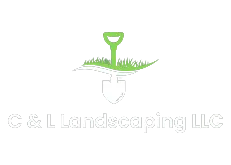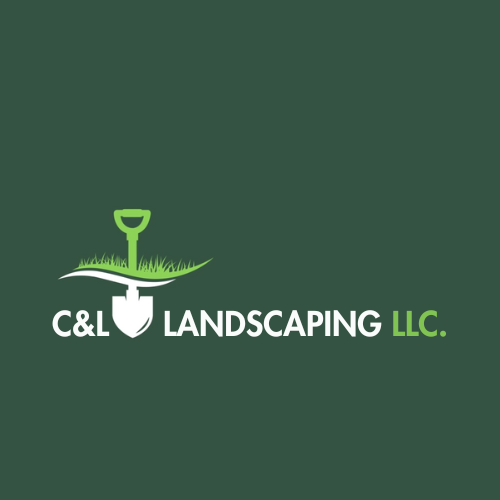CORE AERATION
LEARN MORE
Revitalize Your Lawn with Core Aeration from C&L Landscaping LLC.
Unlock the Secret to a Beautiful, Lush Lawn!
Is your lawn looking thin and lackluster? Transform it into a thick, robust expanse with Core Aeration services from C&L Landscaping LLC. Start the journey to a greener lawn today!
Why Choose Core Aeration with C&L Landscaping LLC?
Restore and Replenish: Eliminate soil compaction and improve the overall health of your lawn, including the root system, grass blades, and soil, without the hassle of trial and error.
What to Expect from Our Core Aeration Process:
Tech Arrival: Your technician will notify you before beginning the core aeration process.Aeration Depth: Our Core Aerator tines will penetrate 2 to 3 inches into your soil, promoting nutrient absorption.Core Removal: The plugs, or "cores," are removed, leaving holes in the ground. These cores dissolve back into the soil, enhancing its composition.Reduced Soil Compaction: Core aeration reduces soil compaction, creating channels for oxygen, water, and nutrients to reach the roots.
Core Aeration for Warm-Season Grasses:
Grass Types: Bermuda, Zoysia, St. AugustineTiming: Once a year in the Spring, awakening your turf and aiding its transition out of dormancy.
Benefits of Core Aeration:
Root Expansion: Relieve soil compaction, allowing roots to expand for improved water and nutrient absorption.Improved Absorption Rate: Enjoy more effective watering, reduced runoff, increased oxygen flow, and enhanced fertilizer absorption, resulting in a thicker, denser lawn.
Our Healthy Lawn Promise:
Count on our well-trained, professional, and friendly technicians to do the job right, backed by our 100% satisfaction guarantee. Reach out with any questions or concerns about your core aeration service.
Ready to Transform Your Lawn? Say Yes to a Beautiful Lawn! Sign Up Now!
What Are Our Customers Saying ?
check out our feedback below.
FAQS
How often should I water my lawn, and what's the best time to do it?
The frequency and timing of lawn watering depend on several factors, including your local climate, soil type, and grass variety. As a general guideline, it's best to water deeply but infrequently. Most lawns benefit from around 1 to 1.5 inches of water per week, including rainfall. To promote strong root growth, it's usually better to water in the early morning, ideally between 6 AM and 10 AM. This allows the grass to dry before evening, reducing the risk of diseases.
How can I improve the health of my lawn's soil?
Soil health is crucial for a thriving lawn. To enhance your soil, consider regular aeration, which improves air and water penetration. Additionally, you can incorporate organic matter, such as compost, to improve soil structure and nutrient content. Conduct a soil test to identify any deficiencies and adjust your fertilization accordingly. Finally, mow your grass at the recommended height for your specific grass type, as this helps maintain soil moisture and grass health.
What can I do to prevent weeds without using harmful chemicals?
Preventing weeds naturally is a sustainable and eco-friendly approach. To do this, maintain a healthy lawn through proper watering, fertilization, and mowing. A thick, dense grass cover makes it difficult for weeds to establish themselves. Additionally, consider using organic mulch in your garden beds to smother weed growth. Hand-pull weeds when they appear, and ensure you remove the entire root system. Regularly overseeding your lawn with grass seed can also help fill in bare spots and compete with weeds naturally. If necessary, use organic weed control methods like vinegar-based herbicides for spot treatments.
When is the best time to get my mulch beds redone?
The best time to get your mulch beds redone is in the Late Fall or early Spring. This will allow your mulch beds to stay fresh during the Summer and maintain proper soil health for plants nearby.
When is the best time to get sod installed?
The best time to get sod installed depends on the type of grass that you have. Most likely, late Fall to early Spring is when most people seek to get theirs installed due to the temperature change from Spring to Summer promoting a healthy growing phase.
When should I consider fixing my sprinkler/irrigation system?
Visible Leaks: If you notice water pooling in areas where it shouldn't or soggy spots on your lawn, it's likely there's a leak in your system.
Uneven Watering: Areas that are consistently dry or overly saturated despite the same watering schedule may indicate issues with your sprinkler heads or distribution.
Increased Water Bill: A sudden spike in your water bill could be a sign of inefficient water usage due to leaks or malfunctioning components in your irrigation system.
System Age: If your sprinkler system is over 10-15 years old, it may be prone to more frequent breakdowns and inefficiencies, requiring repairs or upgrades.
Poor Coverage: Sections of your lawn or garden receiving inadequate water or not being watered at all suggest that your system needs adjustment or repair.
Common Signs of Sprinkler/Irrigation Issues:
Reduced Water Pressure: If some sprinkler heads are spraying weaker than usual, it could indicate clogs, blockages, or issues with the water supply.
Stuck or Broken Sprinkler Heads: Heads that don’t pop up or are damaged can lead to uneven watering and should be repaired or replaced promptly.
Controller Malfunctions: Problems with the controller such as incorrect scheduling, failure to turn on/off, or erratic behavior can affect the system’s efficiency.
Strange Noises: Grinding or whining sounds when the system operates could indicate issues with valves or the water pressure.
Plant Stress: Wilting plants or dry patches in your lawn despite regular watering may signal that your irrigation system isn't performing optimally.
When is the best time to aerate?
The best time to aerate depending on grass type is mid-to-late Fall. During this time period, most of the grass in the South is in prime growing season.
When is the best time to over-seed?
The best time to over-seed depending on grass type is mid-to-late Fall. During this time period, most of the grass in the South is in prime growing season.
How often should I have my grass cut?
How often you choose to have your grass cut depends solely on the type of grass that you have and the season you are in. In most cases, it is recommended that you get your grass cut weekly or bi-weekly depending on the season.

